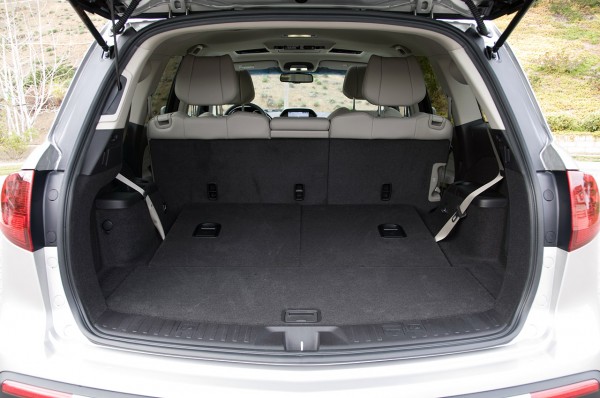Homeless after high school, broke and bad credit after college, my fear of failure and poverty forced me to think about how I could become a successful entrepreneur. What can you do when you only have $1,000 saved from college, no experience or business plan. The answer was easy, just do the damn thing by jumping off the cliff of opportunity and grow your wings on the way down!
A Grinder’s Aha! Moment
First things first, I thought about what I could buy for $1, sell for $2 and repeat the process. I loved wearing designer clothing so I chose that for my business model. Hip-hop brands were my favorite, but it was very expensive trying to keep up with the trends in hip-hop culture because during this time a pair of Platinum FUBU jeans cost $85 in the shopping mall. However, I never bought my clothing in the mall.
Instead, I would go to the discount retailers and pay on average about $29.99 for the same designer brands. Most of the time they were either irregular or past season styles. At that moment, recognizing that the same product (designer jeans) were being sold for two different prices in two different markets (shopping mall retailers and discount retailers), I knew that I could make a profit from the price differences. When you purchase items in a less expensive market from discount retailers and resell those same items to retail customers who typically pay full price at shopping malls, you are executing a concept I call “entrepreneur arbitrage.”
How “Entrepreneur Arbitrage” Works
I would purchase designer clothing products from discount stores for 50-75% off the full retail price in the mall. I would always first locate clearance items for maximum profit, paying on average $10-$12 for Sean John Jeans, Rocawear Jeans, and Ralph Lauren Polo shirts. Then I would cut off the original store price tags, and leave the manufacture suggested retail price tag.
Afterwards, my clothing inventory would be neatly folded and strategically placed (most profitable items in the front) in the trunk of my car. I would then drive to my ideal market location, or a location where hundreds or thousands of people gathered to purchase products and services, usually across the street from a shopping mall or busy strip center, barbershops and car washes, and start selling my products like clockwork.
The 99% Risk Free Business Model
For products that did not sell I used the concept of leverage, which is the art of using someone else’s time, money, or efforts to achieve a desired result. The most remarkable thing about the entrepreneur arbitrage business model, is the significant amounts of leverage. Since I purchased merchandise from discount retailers, I could also easily return the merchandise that I could not sell within thirty days and receive a full refund, or exchange the merchandise for other products. That’s Genius! I learned and knew the importance of retaining all receipts. Compare that to typical retail buyers who receive merchandise on credit terms from wholesalers and must usually pay their suppliers within thirty days regardless if their products sell.
I remember buying an entire rack of Sean John jeans (40 pair). As I just knew, in fact I was more than positive that they would sell like hotcakes. I held onto those jeans for three weeks and not one pair sold. Fortunately, because of the store policy, I was able to return all of them for a full refund or exchange – that’s leverage!
The Art of Leverage
Another form of leverage I used, believe it or not, was layaway. During the holidays, I would use all of my available capital to purchase as much product as possible. The weekend before Christmas was the most profitable of the year. However, my suppliers would constantly receive new merchandise every week and I would not have any extra capital to purchase the new items.
So one year, I took all of the Apple Bottom Jackets from multiple stores and placed them on layaway with 10-20% down for 30 days. This gave me time to sell my existing inventory and then use that capital to “re-up,” or purchase the jackets I placed on layaway. Indeed, I had the mentality of a monopolist, which meant if I could not purchase and resell a particular product on the street, I made sure no one could buy that product for at least a few months by keeping it tied up in layaway.
How to Perform “Entrepreneur Arbitrage”
Step 1: Obtain capital by saving at least $500-$1,000. Use that capital to purchase products that have price differences in two different markets and can be easily resold for a profit from a retailer with a flexible return/exchange policy.
Step 2: After purchasing the products, keep the receipt and price tags and store them in a safe secure area.
Step 3: Market and sell your products at various locations. Purchase a price tagging gun to professionally place the price tags back on any unsold merchandise you expect to return.
Step 4: Reinvest ALL profits back into your business and replenish your inventory, then repeat Steps 1-3 and Grind!
Special Offer to Under30CEO readers: Sign-up to James free inspirational newsletter and get his ebook for free.
James “Bird” Guess is a world-renowned speaker and trainer, entrepreneur and founder of JBG International Success Academy. He is also the best selling author of the book How I Made a Quarter Million Dollar$ From the Trunk of My Car. James inspires working professionals, entrepreneurs and students to adapt to change, develop into global leaders and achieve their greatest potential using a success process called “Grinding.” He can be reached at speak@jamesbirdguess.com

